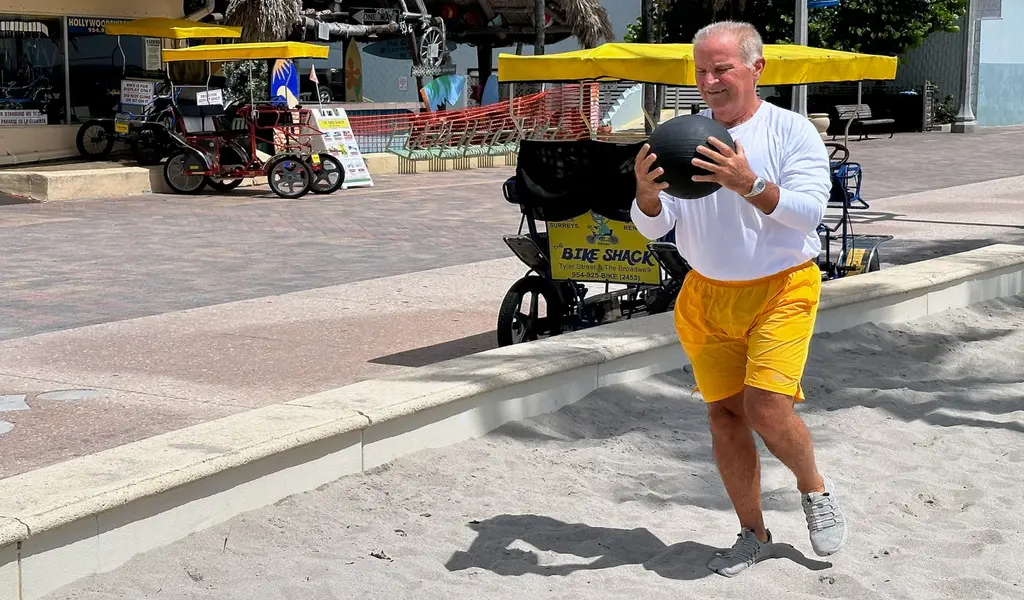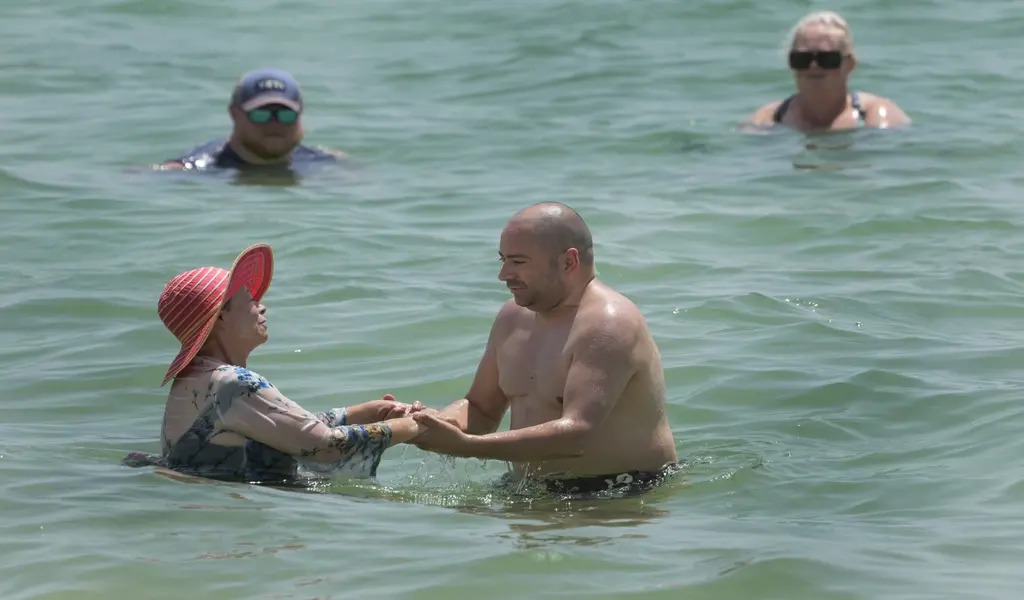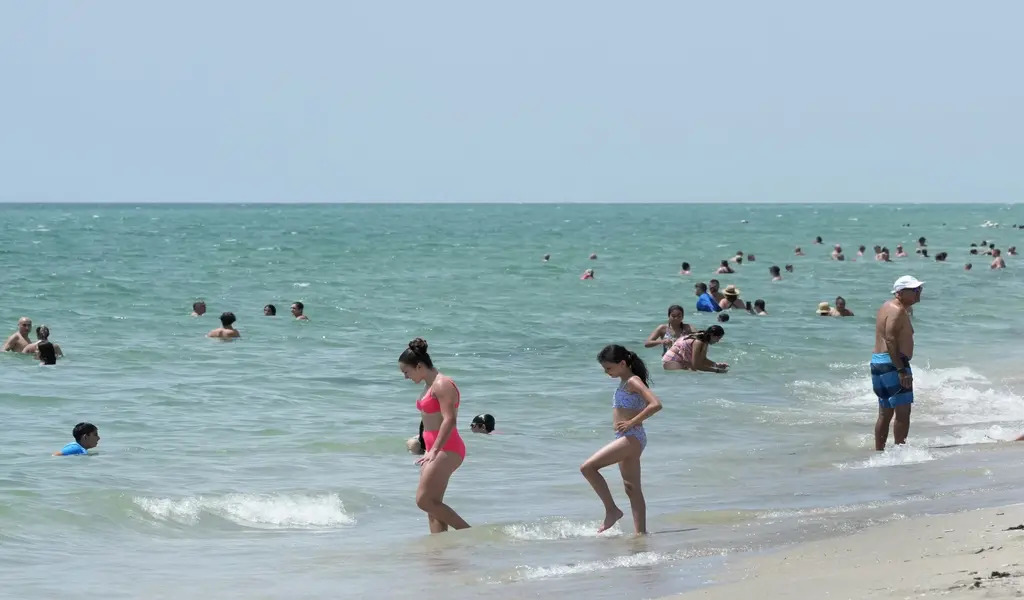News
Unprecedented Climate Crisis In Florida: Heatwave, Coral Bleaching, And Sahara Dust Exacerbate Challenges

(CTN NEWS) – The soaring water temperatures, reaching the mid-90s (mid-30s Celsius), are posing a significant threat to the fragile coral reefs.
Additionally, swimmers are being deprived of refreshing swims due to the excessively warm waters, further intensifying the already oppressive summer climate in the Sunshine State.
Meteorologists are cautioning that, due to high humidity, temperatures could feel as hot as 110 degrees (43 degrees Celsius) by the end of the week.
As if that weren’t challenging enough, Florida is also bracing for an influx of Saharan desert dust from Africa, which is expected to negatively impact air quality in the region.
The global temperature has reached unprecedented levels in recent times, as confirmed by the World Meteorological Organization (WMO) on Monday.
Utilizing data from Japan’s weather agency, the WMO substantiated the unofficial records reported throughout the previous week by the University of Maine’s Climate Reanalyzer.
Japan reported that Friday’s global average temperature surpassed the previous record set in August 2016 by half a degree (0.3 degrees Celsius).
Meteorologists have reported that global sea surface temperatures have been record-breaking since April, with the North Atlantic experiencing exceptionally high temperatures since mid-March.
Climate Change Amplifies Unprecedented Heatwave in Florida, Challenging Residents and Researchers
These extreme conditions are attributed to climate change, which is increasingly linked to more frequent and deadly events.
WMO’s Director of Climate Services, Christopher Hewitt, expressed concern over the situation, stating, “We are in uncharted territory, and we can expect more records to fall. This is worrying news for the planet.”
Now, it is Florida’s turn to face the consequences. On Monday evening, the water temperature near Johnson Key approached a remarkable 97 degrees (36.1 degrees Celsius), according to a buoy operated by the National Oceanic and Atmospheric Administration (NOAA).
A day earlier, another buoy near Vaca Key recorded a temperature close to 95 degrees (35 Celsius).
These readings are approximately 5 degrees higher than the usual temperatures for this time of year, as stated by meteorologists.
National Weather Service meteorologist Andrew Orrison expressed astonishment at the situation, saying, “That’s incredible. The water is so warm that you really can’t cool off.”
Although the recorded temperatures were measured in shallow waters, University of Miami hurricane researcher Brian McNoldy noted that water temperatures ranging from 90 to 93 degrees Fahrenheit (32 to 34 degrees Celsius) across much of Florida were extremely warm.
McNoldy humorously added that even his own swimming pool, with a temperature of 95 degrees, fails to provide any relief and only leaves him wet.
Orrison explained that water temperatures in the Gulf of Mexico and Southwest Atlantic are 4 to 5 degrees (2 to 3 degrees Celsius) higher than usual, leading to increased humidity in Florida.
This elevated humidity exacerbates the already challenging conditions, making it more oppressive for people spending time outdoors.
The heat dome that plagued Texas and Mexico earlier in the summer has now moved to Florida, accompanied by intense sunshine, minimal cloud cover, and a lack of rainfall.
This situation, worsened by the warm oceans, has led to increased humidity, according to Orrison and McNoldy. The stagnant weather patterns and the potential for worsening conditions indicate a sign of climate change, as argued by some scientists.
Orrison even predicted that the situation may deteriorate further, with NOAA forecasting a heat index of around 110 degrees by the weekend.
The situation is even more severe in other parts of the United States. Orrison mentioned that air temperatures of 110 degrees are forecasted for the U.S. Southwest, including Arizona, New Mexico, and southeastern California.
Death Valley is expected to experience highs of 120 to 125 degrees, possibly reaching a highly unusual 130 degrees by the end of the week.
At Hollywood Beach, located south of Fort Lauderdale, the temperature of 91 degrees on Monday was considered average.
Despite the scorching sand, beachgoer Glenn Stoutt stated that the breeze made it bearable for him to perform lunges and calisthenics, although he had to wear shoes.
He amusingly observed how new visitors and tourists would realize halfway through their walk that their feet were getting burned by the hot sand, causing them to run towards the water for relief.
Climate Change Threatens Coral Reefs as Heatwave and Sahara Dust Compound Challenges in Florida
Scientists are particularly concerned about the impact of the heated water on coral reefs.
Mark Eakin, a retired top coral reef scientist at the National Oceanic and Atmospheric Administration (NOAA), stated that there is a high probability of heat stress accumulating early in the season, which could lead to severe bleaching.
Liv Williamson from the University of Miami’s Coral Reef Futures Lab shared alarming reports of bleaching in Belize, occurring unusually early in the summer.
Global projections indicate a 90% chance of major bleaching on numerous reefs, including those in Pacific Islands along the Equator, the eastern tropical Pacific in Panama, the Caribbean coast of Central America, and Florida.
Coral bleaching and die-offs have become more frequent due to climate change, particularly during El Niño events. Williamson mentioned that Australia’s Great Barrier Reef lost half its coral during the last major El Niño in 2016.
Scientists attribute the current heatwave to the presence of a new El Niño event and the continued warming resulting from the burning of coal, oil, and natural gas.
In addition to the heatwave, Florida is also contending with Sahara dust. Typically, at this time of year, plumes of dust particles from the Sahara Desert are carried across the Atlantic by upper-level winds.
However, strong winds are required for the dust to reach Florida, making it a relatively infrequent occurrence. One such plume settled over South Florida on Monday, with another expected later in the week.
These plumes dry the atmosphere, leading to a reduction in the usual afternoon rains experienced during Florida summers.
An interesting consequence of the Sahara dust is the enhancement of sunrise and sunset colors due to sunlight reflecting off the particles.
Sammy Hadi, a meteorologist for the National Weather Service in Miami, remarked that “In general, it makes the sunrises and sunsets more vibrant and beautiful.”
RELATED CTN NEWS:
Russian-Installed Authorities Intercept Cruise Missile, Temporarily Suspending Traffic Kerch Bridge
What To Do In Buenos Aires On Argentine Independence Day: A Sunday Celebration like No Other






























